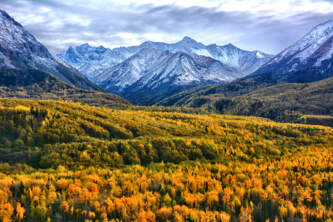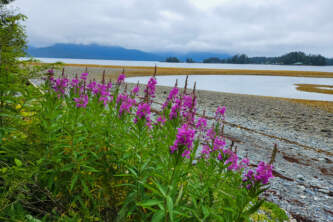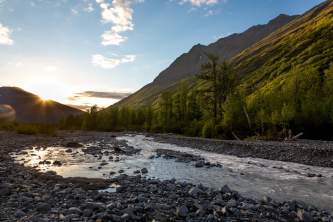Alaska Native Arts & Crafts
Fine Art in the Far North: What to Know and What to Ask
The unique crafts produced in Alaska capture the hearts and souls of its artists—natives and non-natives alike who are tied to their land in a very deep way. From birch trees to whalebone, Alaskan crafts come from the earth and the ancient past. They reflect the values and love that these artists have for their home—an artistic expression of the Alaskan spirit. And bringing home a piece of that spirit helps remind you of what makes Alaska so special.
The selection can be overwhelming…and intimidating. Tennys Owens, owner of Anchorage art gallery Artique, which has been in business since 1971, told us that most Alaskan galleries, big and small, are reputable, save for some seasonal operations that pop up in tourist spots during in the summer. To get a sense of fair prices before you buy, she says, just comparison shop and enjoy all the different options. Here are some guidelines to help you when browsing:
Smart Arts & Crafts Shopping
Paintings and Prints
Originals are easy: if a piece speaks to you and is in your price range, don’t wait. With prints, find out if it’s an original edition or a replication of an original in limited edition signed by the artist. The latter comes in several forms, giclée prints being the closest representation of the original (and the most expensive).
Ivory and Bone
Ivory has three distinct forms here. Fresh walrus ivory, from the migrating walrus still hunted from traditional skin boats, is almost always bright white and can only be carved by a native Alaskan. Ancient walrus ivory, which can be black, blue, or red, is dug up or found, and can be carved by non-natives. And anyone can carve mammoth ivory, which has a distinct crosshatch pattern, versus a more solid walrus tusk. All are excellent; just decide if you want a piece carved by a Native. Bones are significantly more porous than the ivories. You’ll see fresh and ancient whalebone and walrus jawbone, but only the natives are allowed to carve fresh bone.
Antler
Both moose and caribou antler are commonly used as basket and ulu handles, bases for whalebone pieces, or as carvings of their own. Sheep horn also makes for unique artistry, since intricate scenes can be carved out of its curling shape and rugged texture.
Soapstone and Jade
Soapstone is a favorite for sculpture. Though most of the raw stone comes from the Continental U.S., Alaskan artists have put their own wondrous twists on it, often fusing wood or bone with a piece. Jade is Alaska’s State Gem; much of it is mined here, but carved overseas due to its labor-intensive nature (it’s harder than steel).
Scrimshaw
This 18th-century art form consists of a scene or portrait etched on a whale tooth or piece of whalebone. Scrimshaw can also be found on baleen, a shiny black fiber found in certain whales in place of teeth. Only Alaska Natives are allowed to use it for scrimshaw, and a piece of baleen without a signature from a Native Alaskan is illegal to own by a non-native. Be wary of baleen being sold on Anchorage streets.
Baskets
Today’s artists practice the same techniques that Native Alaskans have used for thousands of years. Birch baskets are attractive and relatively inexpensive, while hard-to-make grass and baleen baskets are more valued. Look for symmetry of design, tightness of the weave, and how well the top fits.
Other Forms of Alaskan Art
Photography, pottery, glasswork, jewelry, and woodworking, each having their own distinctive Alaskan flavor. Some tips:
- Ask questions. Sometimes the art’s or artist’s history can make an ordinary piece come alive. If you’re concerned about authenticity, make sure the piece was actually made in Alaska, not Asia.
- If the artwork has animal parts in it (fur, ivory, bone, feathers, etc.), make sure you can import it to your home country (call Alaska Fish and Game Department at 907-267-2100). If you’re driving back to the U.S. through Canada, ship it. Almost any good gallery will ship for you.
- Above all else, buy a piece because you enjoy it and because of its lasting beauty.




